Embarking on a revolutionary journey in hair restoration, stem cell therapy for hair presents a promising frontier in regenerative medicine. This cutting-edge approach harnesses the inherent potential of stem cells, specifically mesenchymal stem cells, to stimulate hair growth and address concerns related to hair loss. Stem cells for hair restoration may help with hair growth, especially after hair transplants. They’re also a great option to try before.
By leveraging the natural regenerative capabilities of these cells, this innovative therapy aims to provide a non-invasive and effective solution for individuals seeking to revive and enhance their hair. As we delve into the intricacies of stem cell for hair, the potential to redefine traditional approaches to hair restoration becomes increasingly evident, offering hope to those exploring advanced options for maintaining and regaining a healthy, vibrant mane.
What is Stem Cells For Hair Treatment?

Stem cell for hair” refers to a regenerative therapy that utilizes the unique properties of stem cells, particularly mesenchymal stem cells, to stimulate hair growth and address issues related to hair loss. This innovative approach aims to leverage the natural regenerative capabilities of stem cells to rejuvenate hair follicles, promote hair growth, and enhance overall hair health.
By harnessing the regenerative potential of stem cells, this therapy seeks to provide a non-invasive and promising solution for individuals experiencing hair-related concerns, offering an alternative or complementary option to traditional methods of hair restoration.
Significance and Purpose of Stem Cell Therapy for Hair Growth

Stem cell therapy for hair growth is a revolutionary approach with significant potential to address issues related to hair loss. Its purpose is to utilize the regenerative capabilities of stem cells, particularly mesenchymal stem cells, to rejuvenate and stimulate hair follicles. This therapy involves introducing these specialized cells into the scalp to promote natural hair growth, enhance hair density, and improve overall hair health.
The significance of this treatment lies in its non-invasive nature and its effectiveness as a solution for individuals dealing with hair loss or thinning. Stem cell therapy for hair growth represents a cutting-edge development in regenerative medicine, offering a more natural and sustainable alternative compared to traditional methods.
Common Causes of Hair Loss
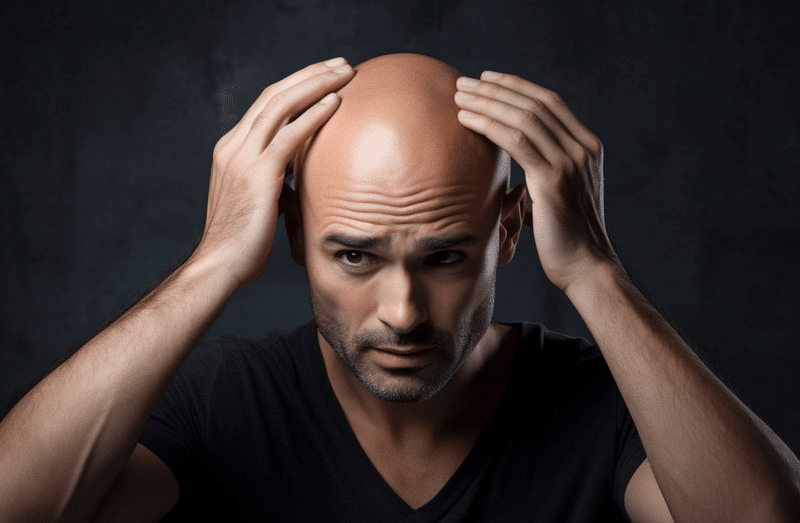
Hair loss can be attributed to various factors, and understanding these common causes is crucial for addressing and managing the condition effectively. Here is a comprehensive detail on the common causes of hair loss:
Genetics (Hereditary Hair Loss): One of the primary causes of hair loss is genetic predisposition. Hereditary factors passed down through family lines, play a significant role in male and female pattern baldness.
Hormonal Changes and Medical Conditions: Hormonal fluctuations due to pregnancy, childbirth, menopause, and thyroid problems can contribute to hair loss. Medical conditions such as alopecia areata and certain autoimmune diseases can also lead to hair loss.
Medications and Supplements: The use of certain medications and supplements can cause side effects, including hair loss. Examples include drugs for cancer, arthritis, depression, gout, and high blood pressure.
Physical and Emotional Stress: Both physical and emotional stress can trigger hair loss. Intense physical stress from surgery, illness, or accidents can lead to a temporary shedding of hair. Emotional stress, including anxiety and depression, can also contribute to hair loss.
Poor Diet and Nutrient Deficiencies: Inadequate nutrition, particularly deficiencies in iron, zinc, vitamin D, and other essential nutrients, can impact hair health and contribute to hair loss.
Tight Hairstyles and Hair Treatments: Excessive hairstyling practices such as tight ponytails, braids, or the use of harsh chemicals in hair treatments can lead to a type of hair loss known as traction alopecia.
How Does Stem Cell Hair Restoration Work?
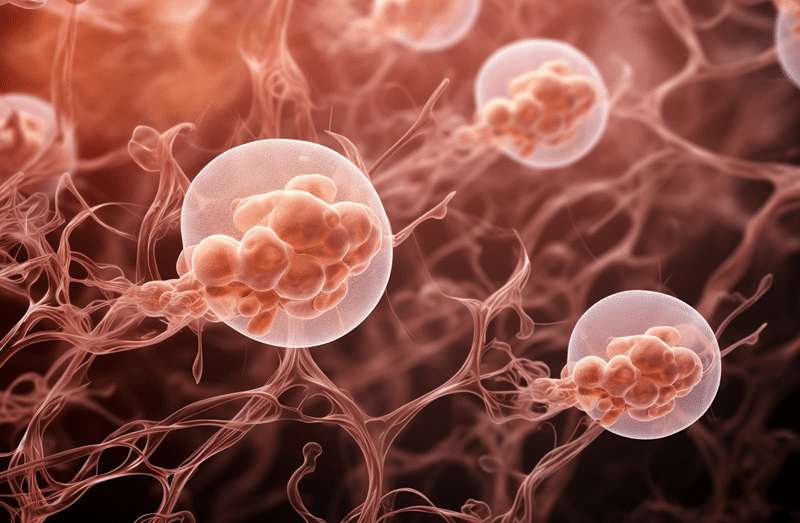
Stem cell hair restoration involves leveraging the regenerative properties of stem cells to promote hair growth and address issues related to hair loss. Here’s a comprehensive overview of how stem cell hair restoration works:
Collection of Stem Cells: The process begins with the collection of stem cells. These allograft cells may be obtained from various sources, including a patient’s own adipose tissue (fat cells), bone marrow, from a registered laboratory, or other specialized sources.
Isolation and Processing: Once collected, the stem cells are isolated and processed to create a concentrated solution. This solution may also contain growth factors and other substances that support tissue regeneration.
Preparation of Scalp: Before applying the stem cell solution, the patient’s scalp is typically prepared. This may involve cleaning the scalp and, in some cases, making small micro-injuries to create a more receptive environment for the stem cells.
Application of Stem Cells: The concentrated stem cell solution is then applied to the targeted areas of the scalp. This can be done through injections, topical application, or other delivery methods, depending on the specific procedure and the chosen source of stem cells.
Activation of Hair Follicles: The stem cells work by activating dormant or weakened hair follicles. They stimulate cellular activity and promote the regeneration of hair follicles, leading to the production of new, healthier hair strands.
Improving Blood Circulation: Stem cells contribute to improved blood circulation in the scalp. Enhancing blood flow to the scalp ensures that hair follicles receive essential nutrients and oxygen. This results in a more optimal environment for hair growth.
Reducing Inflammation: Stems cells have anti-inflammatory properties, which can be beneficial in addressing conditions associated with hair loss. Reducing inflammation in the scalp helps create a conducive environment for hair regrowth.
Supporting Overall Scalp Health: Beyond promoting hair growth, stem cell therapies aim to enhance overall scalp health. This includes improving the condition of the skin, supporting hair quality, and addressing issues like dandruff or dry scalp.
Customized Treatment Plans: Stem cell hair restoration treatments can be customized to the individual’s needs. The concentration of stem cells, the application method, and the number of sessions may vary based on factors such as the extent of hair loss and the patient’s goals.
Monitoring and Follow-up: After the procedure, patients are typically monitored, and follow-up appointments may be scheduled to assess progress and make any necessary adjustments to the treatment plan. Your doctor will also assess your new hair follicles and existing follicles. They’ll determine if you may require hair transplantation to address your male or female pattern baldness.
While stem cell hair restoration shows promise, it’s important to note that research in this field is ongoing, and individual responses to treatment can vary. Consultation with qualified healthcare professionals is crucial to determine the most suitable approach based on the patient’s specific condition and goals to treat baldness.
Recovery Time for Stem Cell Hair Transplants

The recovery time for stem cell hair transplants varies among individuals, but most can resume normal activities within a day or so. Initially, patients may experience mild discomfort, swelling, or redness at the transplant site, which typically subsides in a few days. It’s essential to follow post-operative care instructions provided by the healthcare team.
Patients are advised to avoid strenuous activities, excessive sun exposure, and certain hair care products for a specified period. Gradual hair growth is expected, with visible results becoming noticeable in the months following the procedure.
Routine follow-up appointments enable the healthcare provider to assess progress and address any concerns. Overall, the recovery process is generally well-tolerated, and patients can enjoy the benefits of natural-looking hair restoration with minimal downtime.
What Can I Expect During My Stem Cell Hair Transplant?

A stem cell hair transplant involves a comprehensive process starting with a consultation to assess the patient’s needs. The procedure typically includes preparation of the scalp, harvesting hair follicles from a resistant donor area, and their careful extraction. Optionally, harvested grafts may undergo stem cell enrichment for enhanced growth.
The recipient site is prepared through tiny incisions following the natural hair growth pattern. Meticulous placement of extracted follicles into recipient sites ensures a natural appearance. Post-procedure care instructions guide patients in scalp maintenance and medication use.
Initial recovery involves temporary swelling and scabbing, with transplanted hair shedding before regrowth. Follow-up appointments monitor progress and address concerns, providing a personalized understanding of the individual’s hair transplant journey.
Are there clinical studies showing the efficacy of Stem Cells for hair loss?

Clinical studies on the efficacy of stem cells for hair loss are ongoing, and while some research suggests promising results, the field is still evolving. Limited studies indicate that stem cells, particularly mesenchymal stem cells, may play a role in stimulating hair follicle growth and regeneration.
However, more large-scale and rigorous clinical trials are needed to establish definitive conclusions on the effectiveness of stem cells for treating hair loss. It’s important for individuals considering stem cell treatments for hair loss to stay informed about the latest research findings and consult with qualified healthcare professionals for personalized advice based on their specific conditions.
Can I inject eyebrows with Stem Cells to Grow New Hair?
While a conventional hair transplant is effective for the scalp, its outcomes in other regions may be less optimal. Stem cells offer versatility in promoting hair growth, making them a viable option for various areas. This innovative treatment extends beyond traditional limits, potentially allowing for eyebrow and beard hair regrowth with promising results.
However, this always depends on the patient’s body and how each person reacts. It also depends on how a patient lost hair in the first place. For some patients, they will see facial hair and eyebrow growth using stem cell applications, while others may not produce hair in these areas due to various factors.
How Do I Get Started With Stem Cell Hair Restoration?

Embarking on the journey of stem cell hair restoration involves a comprehensive process designed to address hair loss effectively. It begins with a consultation with a specialized hair restoration expert, where your unique needs and expectations are discussed. Following a thorough assessment of your current hair condition and overall health, a customized treatment plan is developed. This plan outlines the recommended number of sessions, the source of stem cells, and any additional therapies.
During the procedure, stem cells are extracted, prepared, and then applied to the target area. Post-treatment, a series of follow-up appointments are scheduled to monitor progress and address any concerns. Adhering to the post-treatment care instructions is crucial for optimal results and a smooth recovery.
Stem cell hair restoration is a versatile solution, suitable not only for the head but also for areas like eyebrows and beards. The procedure offers a promising avenue for regrowing hair in various regions, providing individuals with effective and natural-looking results.
Stem Cell Hair Regrowth Success Rate

Stem cell hair regrowth has shown promising success rates in addressing hair loss concerns. Clinical studies and patient testimonials suggest that a significant percentage of individuals experience noticeable improvements in hair thickness, density, and overall regrowth. Success rates can vary based on factors such as the extent of hair loss, individual response to treatment, and adherence to post-procedural care.
Typically, success rates are higher when stem cell hair regrowth is combined with other complementary treatments or when it is initiated in the early stages of hair loss. It’s essential to consult with a qualified hair restoration specialist to assess your specific situation and determine realistic expectations. Regular follow-ups and maintenance treatments may contribute to sustained success over the long term.
How Effective are Hair Loss Treatments with Stem Cell Therapy?
Hair loss treatments involving stem cell therapy have demonstrated effectiveness in promoting hair regrowth for individuals experiencing various types of hair loss. Studies and clinical trials have shown promising results, indicating improved hair thickness, density, and overall quality. The effectiveness of stem cell therapy can vary based on factors such as the
How Do Stem Cells Help Hair Loss?
Stem cell treatment for hair loss is a revolutionary approach that harnesses the regenerative potential of stem cells to stimulate human hair follicles. This cutting-edge therapy involves introducing stem cells into the scalp, where they work to enhance cellular activity, improve blood circulation, and trigger the regeneration of hair follicles.
The targeted application of stem cell hair treatment creates a conducive environment for the rejuvenation of hair follicles, promoting natural and sustainable hair growth. This advanced technique holds great promise in addressing various forms of hair loss, providing individuals with an effective and innovative solution for restoring the health and vitality of their hair.
Benefits of Stem Cell for Hair Growth

Stem cell therapy for hair offers several notable benefits in addressing hair loss and promoting human hair growth. Here are the key advantages:
Natural Hair Regeneration
Stem cell therapy harnesses the regenerative potential of stem cells to stimulate the natural regrowth of hair. This process involves activating dormant hair follicles, leading to the emergence of new and healthy hair strands.
Enhanced Hair Follicle Health
Stem cells contribute to the overall health of existing hair follicles by providing essential nutrients and promoting a favorable environment for robust growth. This leads to stronger and more resilient follicles.
Reduced Hair Thinning
Stem cell treatment addresses hair thinning concerns by promoting cellular activity and rejuvenation in the scalp. This results in a thicker and fuller appearance of the hair, combating the effects of thinning.
Improved Blood Circulation
Stem cells play a crucial role in enhancing blood circulation in the scalp. Improved blood flow ensures a patient’s hair follicles receive an optimal supply of vitamins and nutrients, supporting hair growth and follicular health.
Non-Invasive Procedure
Unlike traditional surgical approaches, stem cell therapy for hair is a non-invasive procedure. This makes it a preferable choice for individuals seeking hair restoration without the associated risks and downtime of surgery.
Side Effects of Stem Cell Hair Treatments

Minimal Side Effects: Stem cell hair treatments generally have minimal side effects due to their non-invasive nature. Patients may experience mild discomfort or redness at the injection site, but these effects are temporary and typically subside within a short period.
No Risk of Allergic Reactions: Since the stem cells used in these treatments are derived from the patient’s own body (autologous), there is virtually no risk of allergic reactions. This aspect enhances the safety profile of stem cell hair treatments compared to some other hair restoration methods.
Avoidance of Surgical Risks: Unlike surgical procedures, stem cell hair treatments eliminate the risks associated with incisions, anesthesia, and postoperative complications. This makes them a safer option for individuals seeking hair restoration without undergoing surgery.
Temporary Discomfort: Patients may experience temporary discomfort during or after the procedure, but this is usually mild. Any discomfort is generally short-lived, and patients can resume their regular activities soon after the treatment.
Stem Cell Hair Transplant Procedure Combinations

Combine stem cell therapies with diverse hair restoration procedures
Integration options include micro-needling, PRP, laser therapy, topical applications, LLLT, mesotherapy, and exosome therapy
Tailor treatments based on individual needs and response
Leverage the regenerative potential of stem cells to enhance overall effectiveness
Ongoing research explores innovative combinations for optimal hair restoration
Is Stem Cell Hair Restoration Similar To PRP Progrowth Hair Therapy?
Hair follicle stem cells and embryonic stem cells play crucial roles in the field of regenerative medicine, particularly in addressing hair loss. Hair follicle stem cells, located in the hair follicles, are responsible for the continuous cycle of hair growth and regeneration. Harnessing the regenerative potential of these cells has become a key focus in developing treatments for hair restoration.
While embryonic stem cells, derived from early-stage embryos, have versatile differentiation capabilities, their use in hair restoration is a topic of ongoing research. Researchers are exploring the potential of these cells to differentiate into specialized cell types that can contribute to hair follicle regeneration.
In summary, understanding and harnessing the regenerative abilities of hair follicle stem cells and exploring the potential of embryonic stem cells contribute to advancements in addressing hair loss and promoting hair regrowth.
Can Stem cells be obtained from a blood draw, like PRP?
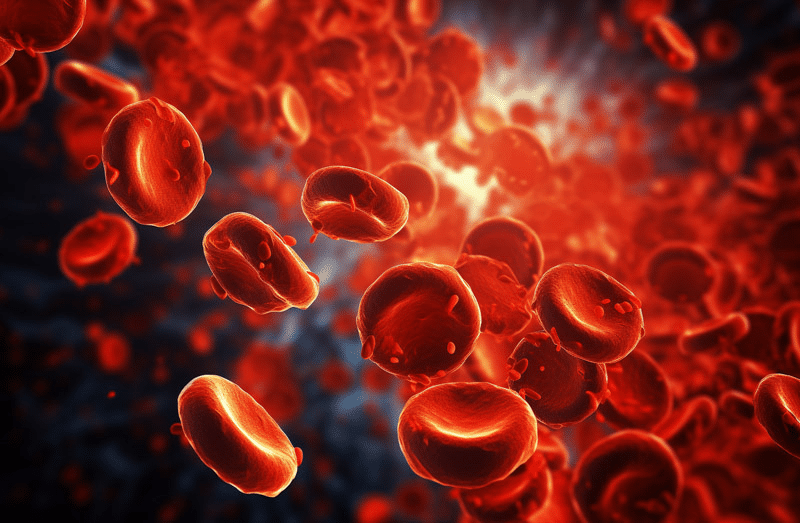
Stem cell transplant for hair recovery is an innovative approach in the field of regenerative medicine, aiming to address hair loss and promote natural hair growth. This procedure involves the transplantation of stem cells, often derived from the patient’s own body, into the scalp to stimulate hair follicles and encourage the regrowth of hair.
While stem cell transplant for hair recovery is generally considered a safe and promising treatment, it’s essential to be aware of potential side effects. Common side effects may include temporary redness, swelling, or discomfort at the transplant site. In some cases, there might be a brief period of downtime or recovery.
It’s crucial to consult with a qualified medical professional before undergoing any stem cell transplant for hair recovery to discuss individualized treatment plans, potential risks, and expected outcomes. Overall, this innovative procedure holds great promise in addressing hair loss concerns and promoting natural hair restoration.
Can I use my own stem cells derived from my own fat cells to be injected into my scalp?
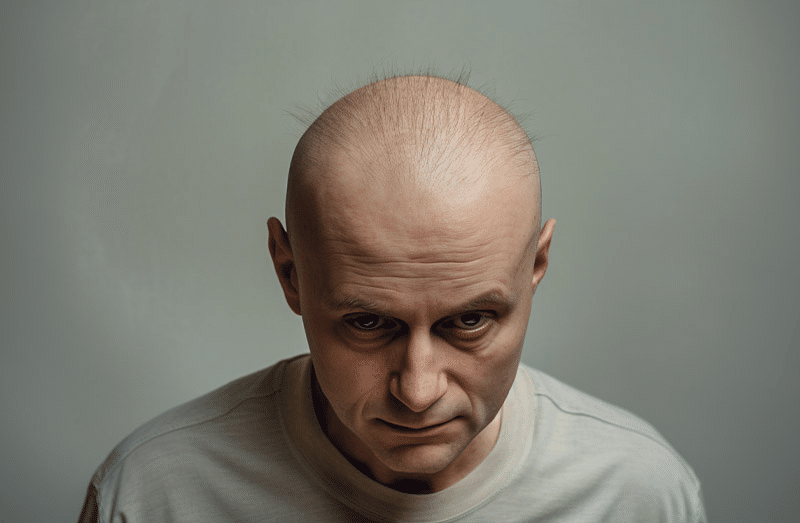
Yes, using your own stem cells derived from your own fat cells for injection into your scalp is a form of autologous stem cell therapy. In this approach, fat tissue (adipose tissue) is usually harvested from your body through a minimally invasive procedure, and the stem cells are isolated from the fat. These extracted stem cells are then processed and injected into the scalp to stimulate hair follicles and support hair growth.
This method is considered relatively safe as it involves using your body’s own cells, reducing the risk of rejection or adverse reactions. However, it’s important to note that the effectiveness of this treatment can vary among individuals, and results may take time to become noticeable. Consulting with a qualified medical professional who specializes in stem cell therapy for hair loss can provide personalized guidance based on your specific needs and conditions.
Are There Growth Factors More Concentrated in PRP Than in Umbilical Cord Cells?

Platelet-Rich Plasma (PRP) and umbilical cord cells contain different components, and the concentration of growth factors can vary between the two.
PRP is derived from the patient’s own blood and is processed to concentrate platelets, which contain growth factors. The concentration of growth factors in PRP is relatively high, and it is known for promoting tissue repair and regeneration.
Umbilical cord cells, on the other hand, typically include various cell types, including mesenchymal stem cells, and are sourced from the umbilical cord tissue. These cells also release growth factors that can stimulate healing and regeneration.
The concentration of growth factors in PRP is specific to the patient’s blood, while umbilical cord cells provide a mix of various cell types and their associated growth factors.
The choice between PRP and umbilical cord cells may depend on the specific treatment goals, the condition being addressed, and the preferences of the healthcare provider and patient. It’s essential to consult with a medical professional to determine the most suitable approach based on individual needs.
Do Stem Cells Duplicate Themselves in the Body?
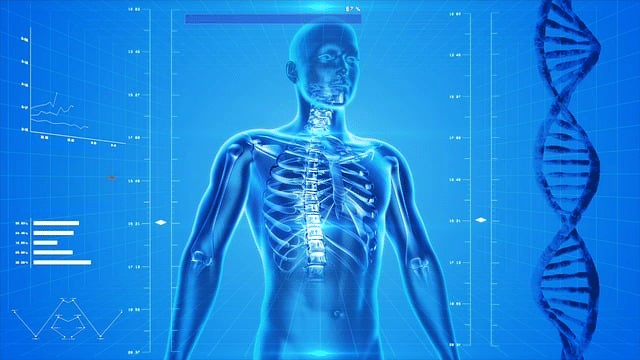
Yes, stem cells have the unique ability to duplicate themselves through a process called self-renewal. Self-renewal is a key characteristic of stem cells that allows them to produce identical daughter cells, maintaining the stem cell pool within the body.
During self-renewal, a stem cell divides into two daughter cells—one remains a stem cell, and the other can undergo differentiation into specialized cell types. This process ensures the continuous supply of both stem cells and differentiated cells needed for tissue maintenance, repair, and regeneration.
The ability of stem cells to self-renew is crucial for their role in supporting normal physiological functions and responding to injury or damage in various tissues and organs throughout the body. This unique feature contributes to the remarkable regenerative potential of stem cells.
Stem cell injections have become a focal point in modern medical research, showcasing their potential to revolutionize therapeutic approaches. Stem cell research has delved into understanding the regenerative capabilities of these cells, paving the way for innovative treatments.
Through stem cell injections, researchers explore harnessing the body’s natural healing mechanisms by introducing these versatile cells into damaged or degenerated areas. This emerging field holds promise for addressing a myriad of health conditions, and ongoing stem cell research continues to uncover new possibilities for regenerative medicine.
Can stem cells be used for Alopecia Areata?
Stem cells show promise in the treatment of Alopecia Areata, an autoimmune condition that causes hair loss. While research is ongoing, some studies suggest that stem cell therapy may help stimulate hair follicle regeneration and promote hair growth in individuals with Alopecia Areata.
The potential lies in the ability of stem cells to modulate the immune response and regenerate damaged tissues, including hair follicles. However, it’s important to note that more extensive research and clinical trials are needed to establish the safety and efficacy of stem cell treatments for Alopecia Areata before it becomes a widely accepted therapeutic option. Individuals interested in this approach should consult with healthcare professionals and stay informed about advancements in the field.
How long do I have to wait before another session of Stem Cell for hair loss?
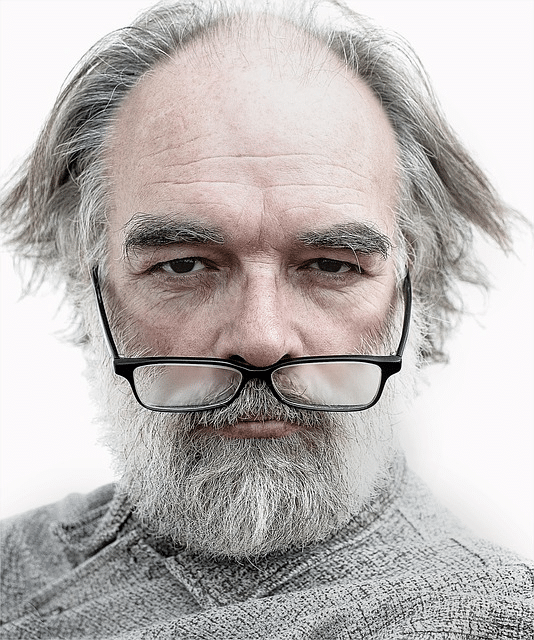
The frequency of stem cell sessions for hair loss can vary depending on individual circumstances and the specific treatment plan recommended by the healthcare provider. In general, there is no fixed waiting period between sessions, and it is typically determined by the response to the initial treatment, the extent of hair loss, and the desired results.
Some individuals may undergo multiple sessions spaced over weeks or months to achieve optimal outcomes. The healthcare provider will assess the progress and recommend the timing of subsequent sessions based on the individual’s response to the treatment and the overall treatment plan.
It’s crucial to follow the guidance of the healthcare professional overseeing the stem cell therapy for hair loss to ensure a personalized and effective approach. Regular follow-up appointments will allow for monitoring progress and adjusting the treatment schedule as needed.
Book An Appointment With Stem Cells LA

Are you facing the challenges of hair loss or thinning hair? Unlock the potential of stem cell therapy for hair restoration. Whether you’re exploring non-invasive alternatives or seeking effective solutions for hair rejuvenation, Stem Cells LA is here to assist you in increasing your hair density and making thinning hair a thing of the past.
Contact us to schedule a personalized consultation and learn more about the transformative benefits of stem cell treatments for hair. Take the first step towards regaining your confidence and achieving natural-looking, fuller hair with cutting-edge advancements in stem cell technology. Interested in a stem cell hair restoration consultation? Send us a message or give us a call now.
Contact Information:
???? Call or Text: 310-281-6160
???? Visit Us:
1970 S. Prospect Ave. Suite 2
Redondo Beach, CA 90277
Discover a path to wellness – we’re here to assist you!

